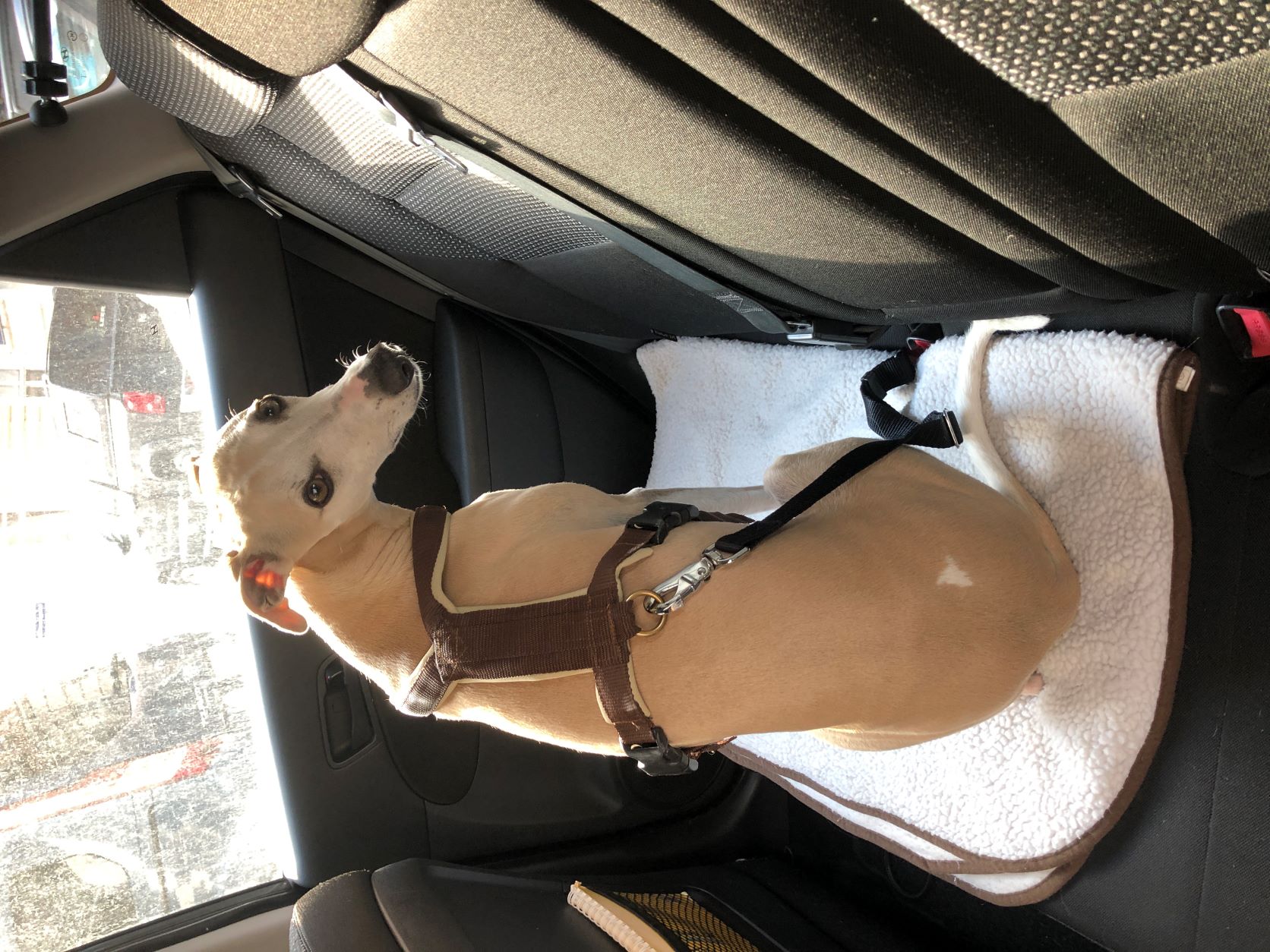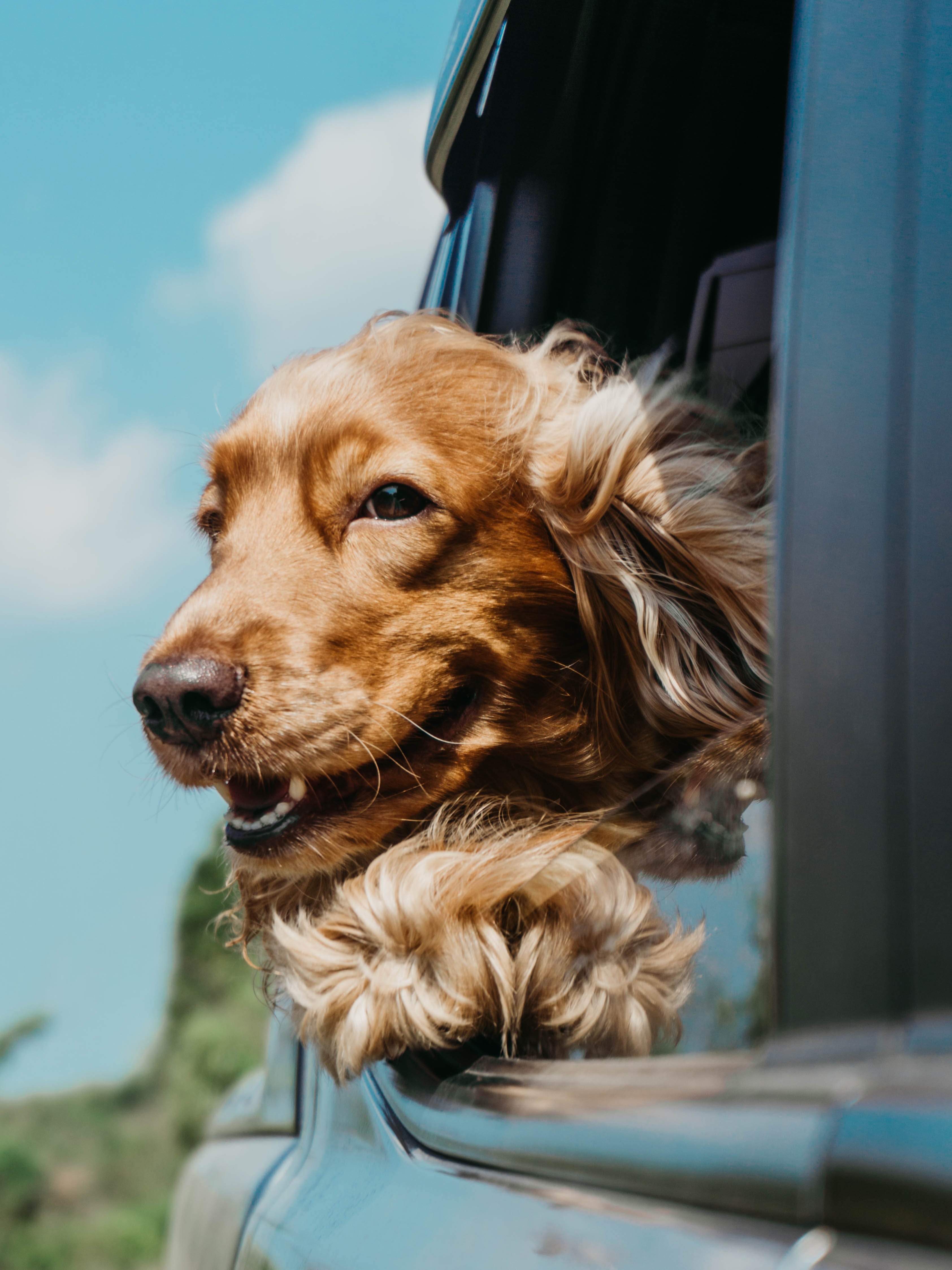Keeping your dog safe in the car
Responsible drivers look out for the safety of their passengers, humans and pets alike. Part of that is making sure that your dog is safely restrained during a car ride, keeping it from distracting the driver and from being thrown across the car in case of a collision or sharp break. In the event of a crash, it also stops them from running off or causing complications for emergency personnel on-site.
What kind of safety measure is right for your dog mainly depends on its size, as well as the size of your car. Finding a suitable option that both you and your dog will be comfortable with will make your car rides a safe and stress-free activity for both of you.
Crates

Generally speaking, a dog crate made out of aluminium is the safest option for transporting your dog. Because of its robust material it offers maximum protection by keeping your dog from being thrown into the front of the car while also guarding them from the force of a rear-end collision. You need to consider the size of the crate in relation to your dog’s size: it should have enough room to stand up and lay down, but not to move around in it. The less space inside the crate, the less room there is for your dog to be thrown around in it, thus the force with which they will collide with the crate’s walls is minimized. If you have more than one dog, they should each get their own crate for a safe transport. Now all you have left to do is make sure that the crate is safely installed in the trunk of your car, either with securing straps or bolts.
Transport boxes and carriers

These models are best suited for dogs that are too small to be safely transported in a crate. Transport boxes and carriers can be transported in the trunk or the back seat, as long as they are properly fixated. They come in different varieties, from foldable carriers to small crates, though the ones you should be looking for when choosing one for your car are models with a robust exterior, to ensure that they will actually protect your dog in case of a collision. When it comes to the appropriate sizes, the same rules apply to transport boxes and carriers as for crates.
Dog seat belts

If a constraining crate or transport box is not an option for your dog, seat belts are an alternative. The seat belt should be used in combination with a harness, as the impact on your dog’s neck with a regular collar can cause severe injuries or worse in case of an accident. To properly protect your dog, invest in a high quality product made out of robust materials and, ideally, an official certification. The length of the seat belt needs to be adjusted in a way that keeps your dog from moving around too much in the back and from being thrown towards the front. Additionally, a barrier can be installed behind the front seats to ensure the protection of the passengers. Using a seat belt for the first time might cause stress for your dog, so have someone sit in the back with it to calm it down and also check if the strap is set to the right length.
A few more things to consider
Now that we’ve looked into the different options for safely taking your dog with you, here are some general tips on how to make a car ride go over smoothly.

If you are using a crate or transport box, take the time to make sure your dog feels comfortable and relaxed in it. If your dog has already been trained to associate a crate with feelings of comfort and safety, a car ride inside one should not pose too difficult a challenge. Dogs that are unfamiliar with these confined spaces might need some time and training to get used to it. You can try to make the transport boxes feel more cosy by laying down blankets and by starting off with short trips to destinations that are fun for your dog, like the dog park or an unfamiliar walking route. Over time, your dog will perceive getting in the crate as something to be excited about, so if only one out of ten trips has the vet as its destination, you should be good to go.

While it might look really cute and fun, letting your dog stick its head out the window during a drive is not only dangerous because of passing vehicles, but can also lead to eye infections. Don’t let your dog sit in the front seat either, as airbags are not modelled to work for dogs and can therefore cause fatal injuries.
While the safety of your dog and your passengers should be enough reason to invest in a safety system, know that in many countries you risk penalty fees for unlawful transportation of pets if you are stopped by authorities. Most countries’ laws within Europe list dogs as cargo that needs to be secured in a way that will ensure the safety of the driver and other passengers. Within the US the laws differ from state to state and their interpretation is not always clear. To get a picture of what applies to you, you can consult the website Orvis. They have collected information about each state’s legal requirements and added detailed explanations of what these requirements mean in reality.
Time to hit the road
Making sure that your dog is safe and comfortable is every dog owner’s wish, so why should it stop at car rides? No matter if you’re going on holiday, to visit friends, or just to the nearest grocery store, transporting your dog in a way that is safe for it, for you, and other passengers, should be a given. With all of these simple yet effective options out there, buckling up your dog will become as natural to you as putting on your own seat belt.